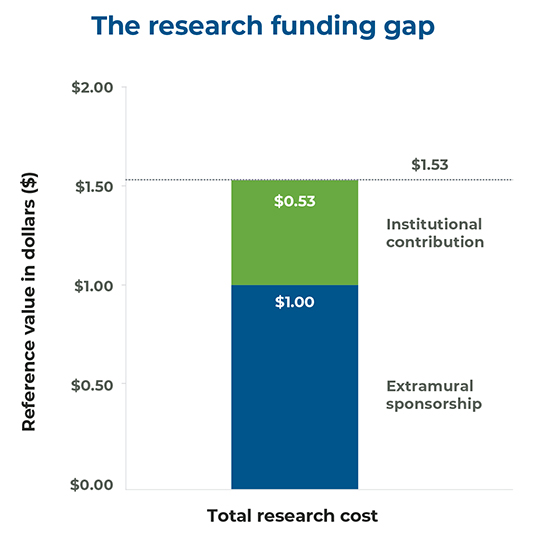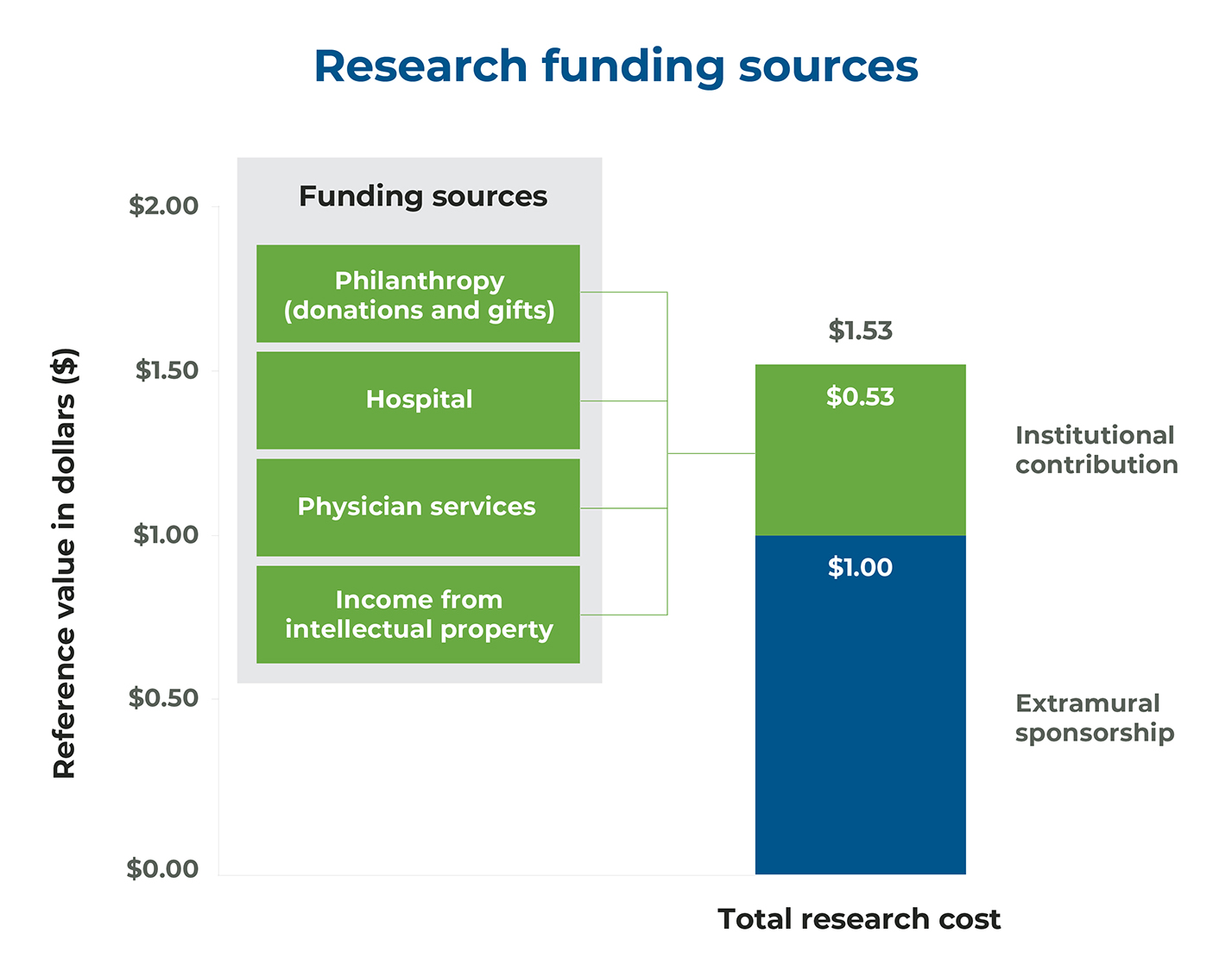In Brief
How to keep your institution moving FORwARd
- Federal funding cuts could intensify financial pressure on colleges, universities, and research institutions already subsidizing research through philanthropy, revenue, and intellectual property income.
- The FORwARd framework offers a proactive approach with four steps: scenario planning, intervention prioritization, impact analysis, and response strategy to address funding gaps and safeguard innovation.
- Creating a detailed strategy now ensures resilience, protects research missions, and sustains progress despite disruptions.
Recent executive actions and broader proposed budgetary reductions by the U.S. federal government have heightened concerns about the potential impacts on innovation, public health, and America's global leadership in research and development. The reduction of federal funding threatens to disrupt vital scientific advancements and jeopardize the sustainability of research initiatives critical to maintaining national competitiveness and public health standards.
The prevailing perspective in Washington suggests universities and other grant recipients may be exploiting U.S. taxpayers, mainly through the overhead costs associated with research projects. However, the reality is that academic institutions have long subsidized federally funded research.
A 2015 study conducted by the Association of American Medical Colleges, with support from Huron, revealed that for every dollar received from extramural sponsors, research institutions must contribute an additional 53 cents to cover research expenses fully (see chart below). Additionally, some federal grants explicitly require cost-sharing as a condition for award eligibility, demonstrating that universities already bear substantial financial commitments.

To bridge this funding gap, institutions typically rely on philanthropy, hospital and physician services revenue, and income generated from intellectual property (see chart below). However, persistent inflation, reduced healthcare reimbursements, and growing reliance on costly advanced technologies for certain research areas have increasingly strained this financial model. Consequently, the proposed federal actions aimed at reducing research funding threaten to exacerbate an already challenging financial landscape further.

A U.S. District Court nationwide preliminary injunction temporarily blocking the implementation of proposed cuts to the National Institutes of Health (NIH) indirect cost rate provides a critical opportunity for institutions to reflect and strategize. Given this temporary pause, what proactive measures should institutions undertake to ensure future resilience against potential funding disruptions?
A game plan: The FORwARd framework
To tackle this uncertainty, institutions can turn to a structured approach called FORwARd: Financial Optimization for Research and Academic Resilience. This process includes four steps: scenario planning, intervention prioritization, impact analysis, and response strategy.
1. Scenario planning: Asking what could happen
The scenario planning phase involves a visioning exercise during which institutional leaders critically assess the potential impact of various federal funding reductions and estimate possible funding gaps. Leaders should consider scenarios such as:
- What if indirect revenue decreases by 20%? By 35%?
- What if entire research programs face suspension?
- What if clinical practice margins deteriorate significantly, limiting health system contributions to the research mission?
The output of this phase should be at least two scenarios with estimated funding gaps, intended as orders of magnitude rather than exact financial figures, which will help prioritize strategic actions moving forward.
2. Intervention prioritization: Developing an inventory of solutions
In the intervention prioritization phase, leaders develop an inventory of actionable “levers” that could be pulled to either enhance revenue or reduce costs, thereby addressing the funding gaps identified.
On the revenue side, options include tapping new funding sources, ramping up philanthropy, making better use of restricted funds, or pushing commercialization. For cost-cutting, think streamlining administrative tasks, optimizing lab space, sharing infrastructure, freezing hires, tweaking salaries, outsourcing non-essentials, or trimming less critical programs.
For example, Duke University recently announced several cost reduction measures, including a hiring freeze, salary adjustments, and suspension of capital spending. The university plans to take additional steps to drive efficiency and reduce costs.
By the end of this phase, institutions should have an inventory of financial improvement interventions prioritized based on their potential financial impact, ease of implementation, and cultural considerations.
3. Impact analysis: Crunching the numbers
Now, it’s time to get specific. In the impact analysis phase, institutions perform a more specific financial assessment of the top-priority interventions, calculating their financial benefits and practicality. Institutions might start with a handful of high-impact options, diving deeper into others only if needed.
For example, Huron is assisting several academic medical centers (AMCs) with an assessment of their endowments and quasi-restricted funds to determine whether they were using those funds optimally. Through this exercise, we have found significant opportunities to replace discretionary funds with restricted funds, improving their current financial position and long-term financial sustainability.
By the end of this step, institutions should have a solid lineup of workable ideas, each with a clear estimate of potential financial improvement.
4. Response strategy: Getting ready to act
Finally, the response strategy phase involves developing detailed implementation plans for each scenario identified during scenario planning. Each scenario's tactical road map should outline clear project governance structures, an effective communications strategy, prioritized actions, clearly assigned roles and responsibilities, and a robust management plan.
The deliverable of this phase is a ready-to-activate tactical plan that allows rapid institutional response should any anticipated funding disruptions occur.
Why act now?
The FORwARd framework — scenario planning, intervention prioritization, impact analysis, and response strategy — gives research institutions a clear path to weather federal funding cuts. By acting proactively, institutions can protect their research missions and keep driving innovation, even in tough times. The message is simple: don’t wait. Start planning today to stay resilient tomorrow.

